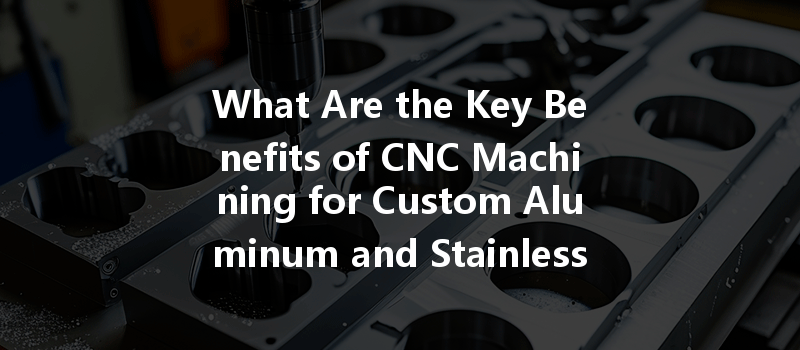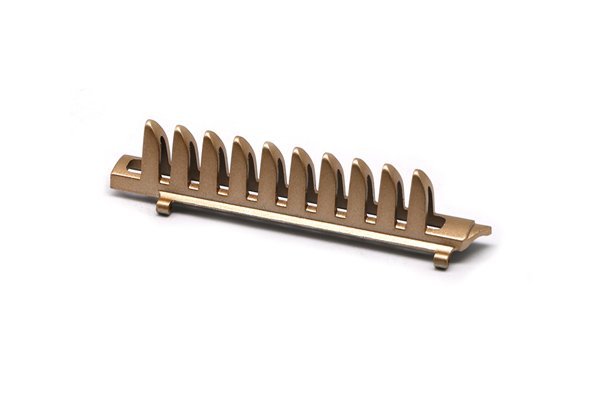Did you know that the CNC machining industry is projected to reach a market value of $100 billion by 2025? As industries continually flex their muscle toward precision, efficiency, and cost-effectiveness, the role of CNC (Computer Numerical Control) machining has never been more crucial. Whether you are in aerospace, automotive, medical, or manufacturing sectors, understanding how CNC machining can specifically benefit the fabrication of custom aluminum and stainless steel parts can set your projects up for success.
In this comprehensive blog post, we will delve into the intricacies of CNC machining, exploring its applications, advantages, processes, and specific solutions to common challenges faced in machining custom aluminum and stainless steel components. We also aim to provide details and insights that can help you maximize the efficiency and effectiveness of your machining operations.
CNC machining is a subtractive manufacturing process that uses computerized controls to cut and manipulate materials into desired shapes and sizes. Unlike traditional manual machining, CNC machining is operated through a program that tells the machine exactly how to operate—allowing for high levels of precision and repeatability.
The process is particularly beneficial when working with materials like aluminum and stainless steel, widely used in various applications:
Before digging deeper into specific machining challenges and solutions, it’s worth highlighting the key benefits that CNC machining offers for custom aluminum and stainless steel parts.
2.1 Precision and Accuracy
CNC machines can produce parts with intricate geometries that traditional methods may struggle to achieve. High-precision tools allow for tolerances as tight as ±0.001 inches, ensuring that components fit together seamlessly.
2.2 Speed and Efficiency
CNC machining automates the manufacturing process, drastically reducing production time. Parts can be manufactured in large volumes without sacrificing precision. This efficiency can ultimately lead to cost savings.
2.3 Versatility in Design
CNC machining supports a vast array of materials and shapes. Whether you’re aiming for complex designs or simple forms, CNC technology can accommodate with relative ease.
2.4 Minimized Waste
Because CNC machining is a subtractive process, it usually generates less waste, allowing for effective resource management. The capability to recycle materials further enhances ecological sustainability—something crucial today.
2.5 Customization and Flexibility
As projects evolve, so do design specifications. CNC machining’s programmability allows for easy adaptations to the design, enabling manufacturers to make quick changes without major downtime.
Every manufacturing process has its challenges, and CNC machining is no exception. Below are some of the issues commonly faced when machining aluminum and stainless steel, alongside potential solutions.
3.1 Tool Wear and Tear
CNC machining can lead to significant tool wear, particularly with stainless steel due to its toughness. Regular tool changes or monitoring can mitigate the impact of wear.
Solution: Opt for coated tools or carbide materials, which are less susceptible to wear and can withstand higher temperatures.
3.2 Surface Finish Issues
Achieving a desired surface finish can sometimes be tricky, especially when dealing with softer materials like aluminum or tougher ones like stainless steel.
Solution: Employ appropriate machining strategies, including using proper speeds and feeds, using the right type of lubricants, and selecting the best tooling for the desired finish.
3.3 Distortion or Warping
Changes in temperature during machining processes can lead to metal distortion, particularly with aluminum parts.
Solution: Ensure proper fixturing during machining and use cooling techniques to maintain a stable temperature.
Now that we’re aware of the benefits and challenges of CNC machining, let’s explore the processes used in creating custom parts.
4.1 CNC Milling
CNC milling involves the use of rotary cutters to remove material from the workpiece. It is one of the most common machining processes used for aluminum and stainless steel parts. Various milling techniques such as face milling and contour milling are employed based on the design specifications.
4.2 CNC Turning

CNC turning is used to create cylindrical parts, where the material is rotated against a fixed cutting tool. This process is particularly useful for producing round components, typical in many machine-based applications.
4.3 CNC Laser Cutting
For more precise and intricate designs, CNC laser cutting is employed. This method is versatile and can produce intricate designs with clean edges on both aluminum and stainless steel.
4.4 CNC Waterjet Cutting
Waterjet cutting utilizes high-pressure water mixed with abrasive materials to cut through aluminum and stainless steel. It is a preferred method for thick materials and reduces the heat-affected zones often seen in other cutting processes.
4.5 CNC Plasma Cutting
This process incorporates a plasma torch that melts metal to cut through thicker materials. It’s fast and effective for applications that don’t require the same precision as laser or waterjet cutting.
Selecting the right materials is essential for the success of CNC machining. Aluminum, for instance, is lighter and can be machined faster, while stainless steel offers strength. Understanding the properties of different grades of these alloys is necessary for optimizing your components.
To harness the full benefits of CNC machining, consider implementing the following best practices:
6.1 Regular Maintenance
CNC machines require routine maintenance to operate efficiently. Regular check-ups can help prevent breakdowns, ensuring minimal downtime and increased productivity.
6.2 Optimize Machining Parameters
Adjusting speeds, feeds, and tooling based on the specific material and part design can greatly enhance machining efficiency while prolonging tool life.
6.3 Comprehensive Planning
Before starting a project, thorough planning is essential. Analyzing your design for manufacturability (DFM) can identify potential issues and allow for better execution.
6.4 Implement Quality Control
Establish a quality control process incorporating measurement tools and techniques to ensure parts meet design specifications throughout production.
Analyzing case studies underscores the significance of effective CNC machining. For instance:
The future of CNC machining is promising, with emerging trends like additive manufacturing blending with traditional subtractive methods. The introduction of AI and machine learning into CNC programming has the potential to revolutionize industry standards.
Understanding the intricacies of CNC machining for custom aluminum and stainless steel parts is paramount for various industries aiming to stay competitive. From precision and efficiency to customization and waste reduction, CNC machining sets the stage for advanced manufacturing solutions.
Reflecting on the challenges and best practices discussed in this blog, it’s clear that strategic planning and ongoing process optimization are essential for success. As we move further into a manufacturing future that emphasizes technology and sustainability, the need to adapt to these trends becomes a priority for businesses looking to thrive.
Investing in CNC machining technology is not just a decision; it is a crucial step toward enhancing productivity, quality, and profitability. By keeping ahead of the curve, manufacturers can produce parts that meet the growing demands of today’s innovative industries. So, as you ponder the ideal strategies for your manufacturing projects, remember that CNC machining offers a pathway to excellence and efficiency that cannot be overlooked.






